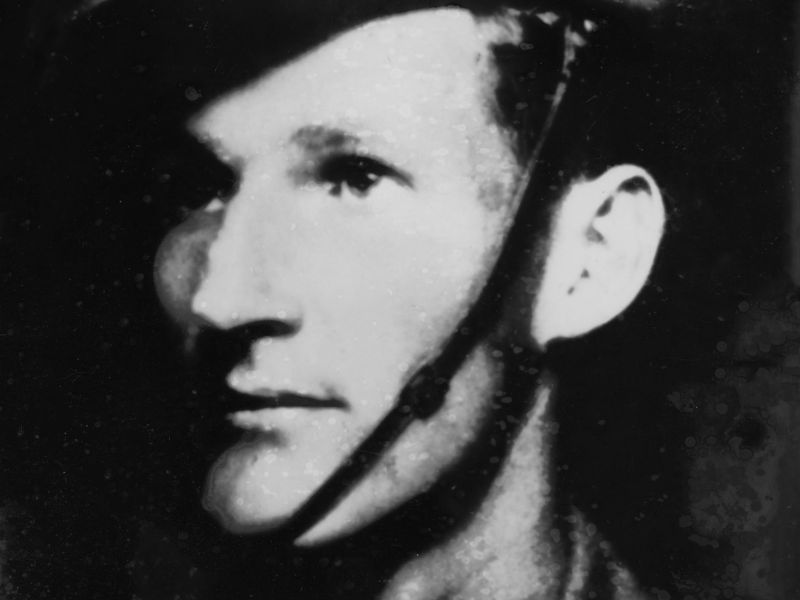Bernard Spilsbury
The death of Frederick in 1917, when Bernard was only four years old, must have been very difficult for the family. The 1921 English Census finds Bernard as an inmate of the Manchester Warehouseman And Clerk’s Orphan Schools in Cheadle, Hulme in Greater Manchester. This boarding school had been established in 1855 to help with the education and care of children who had lost their fathers. The 1921 Census also indicates that Bernard’s younger sister, Winifred, attended this school as well.
A few weeks after his 17th birthday, on the 22nd of November, 1929, Bernard boarded the SS Ormonde and said farewell to the country of his birth. The ship arrived in Sydney 25 days later. His last known address in the UK was 8/9 Victoria Buildings, St Mary’s Gate, Manchester.
Upon arriving in Australia, Bernard travelled extensively in western NSW. Members of the family think that Bernard travelled by bicycle from Sydney to Walwa and then went to Western NSW and finally back to Walwa. It is known that he worked and lived on two properties; “Glencoe” at Fairholme and “Gwandoban” near Nyngan. Bernard also had some relatives from his mother’s side living in Walwa, Victoria, so his next journey was over 500 kilometres south. While there, he met Margaret Dalgeish Miller. Margaret had also lost her father when she was young, only a year old. She too travelled out to Australia with her mother and two of her brothers (James and David) on the SS Mamilius in 1927.
Bernard and Margaret were married in 1934, in Walwa. In 1935 he was listed as being a farm hand at the Cook family homestead, Linstead, in Walwa. They moved into Corryong in 1934, where their first child, James Bernard (Jimmy) was born on the 4th of November 1935. Two more children were to follow; Margaret Anne on the 22nd of December 1936, and Frederick Nevis on the 15th of April 1940.
Bernard enlisted for service at Wangaratta, Victoria on the 9th of November, 1939. At the time he was married, gave his trade as a gardener, and lived at Hanson Street in Corryong, Victoria. He was allocated the service number VX7020. On the 22nd of that month, he was posted to the 2/8th Infantry Battalion and transferred to the training camp at Puckapunyal in Victoria. Five months after its formation, and at the conclusion of many and varied training exercises, the battalion said farewell to Puckapunyal and boarded the train to Melbourne.
The 2/8th Battalion embarked on HMT 75 Dunera at the Port of Melbourne on the 14th of April, 1940, and proceeded overseas. The Dunera joined a convoy that consisted of the transports Strathaird, Ettrick, and Neuralia. At Fremantle, the convoy picked up another transport, the Nevassa, and its escort, HMS Ramillies and the Australian light cruiser HMAS Adelaide. Three days into the journey HMAS Adelaide bade farewell and was replaced by the French cruiser Sufferin.
They disembarked at El Kantara, the Egyptian port on the Suez Canal a little over one month later on the 18th of May. The 2/8th arrived at Qastina Camp the following day and, five days later, became part of the 19th Infantry Brigade of the 6th Australian Division, and moved to the camp known as Kilo 89 situated along the Gaza-Tel Aviv Road in Palestine. At Kilo 89 the battalion’s training, equipment and transport were built up to War Establishment scale.
Bernard’s first experience of action occurred in early January when the 6th Australian Division captured the harbour town of Bardia, 24 kilometres inside the eastern frontier of Libya, which was held by Italian forces. The next major obstacle in the path of the Allied troops was the well-defended town of Tobruk.
At 0500 hours on the 21st of January, 1941, the 2/8th Battalion moved forward to the starting line and crossed the outer defences of Tobruk at Post R55. It took up positions at the starting line near Bir El Mentechsa. At 1030 hours it advanced, swinging left from the perimeter in the direction of Fort Pilastrino. A stiff resistance was met from a line of dug-in Italian tanks. The enemy counter-attacked with support from M11/39 tanks, but it was broken up by the arrival of British Matilda tanks. During these operations, the battalion captured General Barberis, the Italian commander of Tobruk’s eastern sector. By nightfall, the objective had been gained and the headquarters of the 2/8th was established near Fort Palistrino after covering over 30 kilometres during the day's advance.
During the day’s fighting, Bernard was wounded in action and subsequently died of wounds on the following day. Captain Pierce, the chaplain of the 2/8th battalion buried Bernard in the Gazala aerodrome cemetery within the Tobruk lines. After the war, the majority of Commonwealth soldiers who were killed in this campaign, including Barnard, were reinterred in the Knightsbridge War Cemetery in Acroma, Libya.
Bernard is also remembered at the Australian War Memorial Roll of Honour, and the Corryong War Memorial. For his service, he was awarded the Africa Star, the Defence Medal, the War Medal 1939-1945 and the Australian Service Medal 1939-1945.

 Stephen Learmonth
Stephen Learmonth